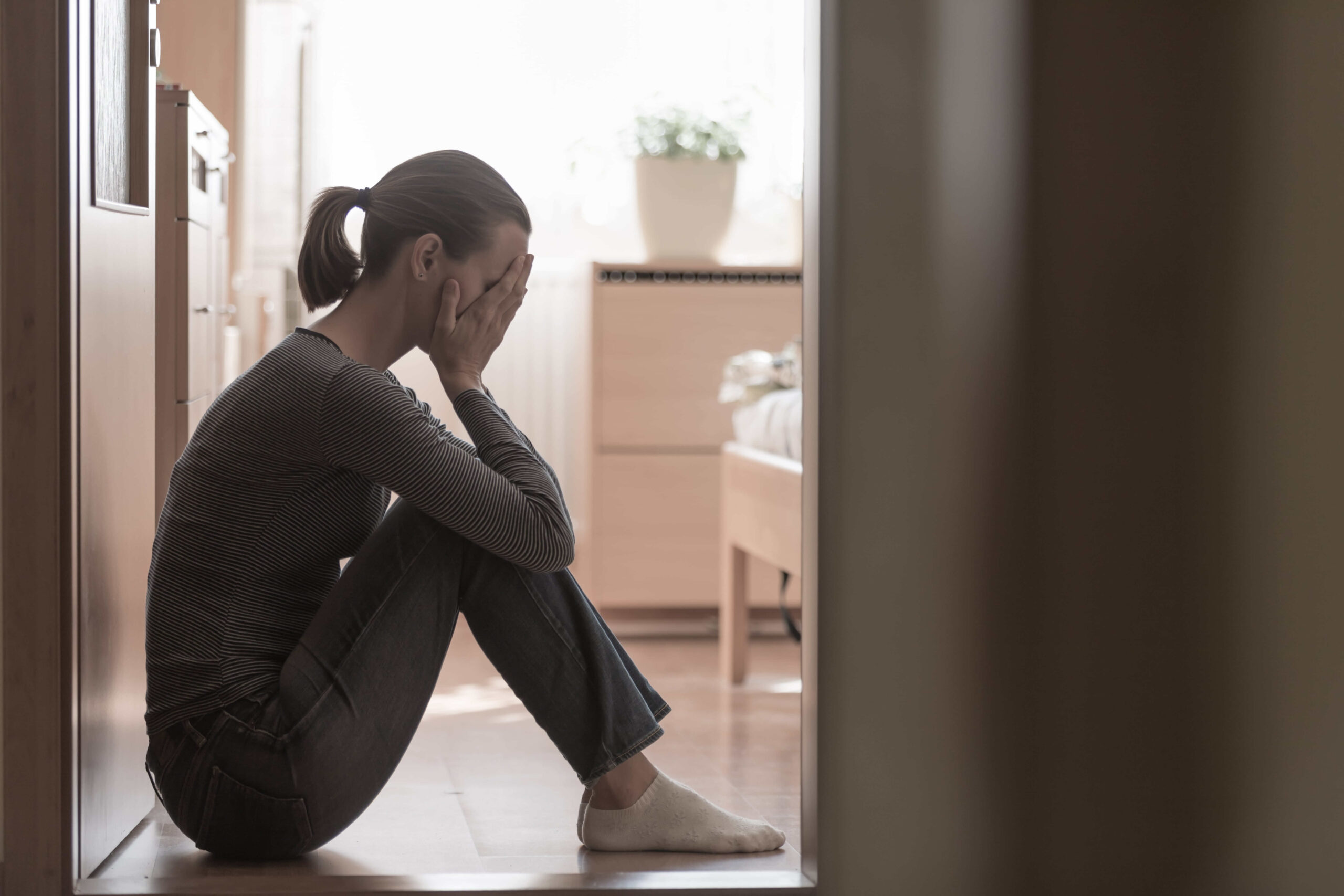
Your Diagnosis Doesn’t Define You: Types of Mental Health Disorders & How You Can Cope
In our society, it’s easy to get caught up in labels. The stigma surrounding mental health disorders has caused young adults to feel afraid or ashamed of their diagnosis. It’s important for anyone who may be dealing with a mental health disorder to know that you are not your diagnosis. Having a disorder doesn’t define who you are or how you fit into the world.
In this blog, we’ll review the most common types of mental health disorders and their symptoms. We will explain how you can cope with having a disorder, not only by yourself but with the help of mental health professional.
What is Mental Health?
Mental health includes a person’s emotional, psychological, and social well-being. Mental health is important because it affects how we think, feel, and act. More specifically, our mental health is what determines how we handle stress, relate to others, and make healthy life choices.
A person’s mental health can change over time depending on numerous factors. Some of these factors are due to lifestyle choices like work, diet, drugs, or lack of sleep. However, there can be more specific factors that may play a key role in a person’s mental health including:
- Childhood abuse, trauma, or neglect
- Social isolation or loneliness
- Experiencing discrimination and stigma
- Bereavement (losing someone close to you)
- Severe or long-term stress
- Suffering from a long-term physical health condition
- Unemployment or losing a job
- Homelessness or poor housing
- Drug and alcohol misuse
- Domestic violence, bullying, or other types of abuse as an adult
- Significant trauma as an adult
- Physical causes (head injuries or neurological conditions)
It’s important to remember that mental health disorders are more common than they seem. More than 50% of people will be diagnosed with a mental illness or disorder at some point in their life. Within this statistic, 75% of those mental health issues will begin by age 24.
However, young adults suffering from mental illness or disorders don’t always get the treatment they need to feel better. Suicide is the second leading cause of death among young adults. This may be because a staggering 67% of young adults, ages 18-24, with anxiety or depression, don’t seek treatment.
As you read these mental health statistics, it’s important to remember that mental health disorders are treatable and suicide is preventable. Being diagnosed with a mental health disorder doesn’t mean that you are defined by it. Knowing the types of mental health disorders, symptoms, and how to get help could potentially save a life, whether it’s yours or someone else’s.

What are the Types of Mental Health Disorders?
There is a variety of types of mental health disorders, however, many fall under the same categories. There are also disorders that are more common than others. The mental health disorders that affect most of the population include:
- Depressive Disorders
- Bipolar Disorders
- Anxiety Disorders
- Schizophrenia Disorder
While these aren’t the only disorders, these are the ones that many people will experience in their lifetime. The severity of each disorder can vary depending on the person, and therefore symptoms can present themselves in different ways. It’s important to be aware of any symptoms a person may be showing and address them before their condition gets worse.
Depressive Disorder Symptoms
Depressive disorders negatively affect the way a person feels, thinks, and acts. The most obvious signs of depression are the feeling of sadness and/or loss of interest.
Someone suffering from a depressive disorder can be affected by countless emotional and physical problems. Some other common signs of depression include:
- Feeling sad or depressed
- Loss of interest or pleasure in activities that were once enjoyable
- Changes in appetite (either weight loss or gain)
- Trouble sleeping or sleeping too much
- Loss of energy or increased fatigue
- Increase in purposeless activities (inability to sit still)
- Slowed movements or speech
- Feeling worthless or guilty
- Difficulty thinking, concentrating or making decisions
- Thoughts of death or suicide
However, depression can be managed with treatment, and a person can learn to live a fulfilling life. Someone who is experiencing two or more of these symptoms should seek help from a mental health professional. If anyone is having suicidal thoughts, they should get help immediately, or contact the suicide hotline for assistance.
Bipolar Disorder Symptoms
Bipolar disorder causes unusual shifts in a person’s mood, energy, activity levels, and ability to carry out daily tasks. There are different types of bipolar disorder, Bipolar I and Bipolar II, that vary in severity and symptoms.
Both types involve drastic changes in mood and energy. These changes can range from being extremely “up” (elated, euphoric, irritable, or energized) to being extremely “down” (sad, indifferent, or hopeless).
The periods of being “up” are considered manic episodes whereas the periods of feeling “down” are known as depressive episodes. There are also less severe manic periods which are known as hypomanic episodes. Depending on the person’s behavior, they will be diagnosed with one of the three types:
- Bipolar I– Defined by manic episodes that last at least 7 days, or by manic symptoms that are so severe they require hospitalization immediately. The depressive episodes will usually last at least 2 weeks.
- Bipolar II– Defined by a pattern of depressive episodes and hypomanic episodes. This type does not include the severe manic episodes that type I experiences.
Bipolar disorders can be serious and should be taken care of once symptoms are presented. A mental health professional can help to diagnose which type of bipolar a person has and decide the proper treatment going forward.
Anxiety Disorder Symptoms
Everyone experiences anxiety, however when feelings of intense fear and distress become overwhelming and prevent a person from taking part in daily activities, they could have an anxiety disorder.
All anxiety disorders present the same feeling of persistent, excessive fear or worry in non-threatening situations. There are also other symptoms someone can look for like:
- Feelings of apprehension or dread
- Feeling tense or jumpy
- Restlessness or irritability
- Anticipating the worst-case scenario or paranoia
There are physical symptoms of anxiety as well including:
- Racing heart or shortness of breath
- Sweating, tremors, or twitches
- Headaches, fatigue, or insomnia
- Nausea, frequent urination, or diarrhea
If someone is presenting two or more of these symptoms they should seek help as soon as they can. While common, anxiety can be debilitating and have a negative effect on a person’s life and well-being.
Schizophrenia Disorder Symptoms
Schizophrenia is a disorder that causes psychosis and can greatly affect a person’s life. This disorder is characterized by significant impairments of a person’s reality as well as changes in behavior. The most common signs of schizophrenia include:
- Persistent delusions
- Persistent hallucinations
- Experiences of influence, control, or passivity
- Disorganized thinking
- Highly disorganized behavior
- Limited speech and restricted expressions of emotion
- Lack of interest in activities or expression of pleasure
- Extreme agitation, slow movements, or unusual postures
People with schizophrenia usually present two or more of these symptoms. Some people can make a complete recovery of these symptoms while others may experience worsening symptoms throughout their life. It’s important to seek help immediately if someone is showing signs of schizophrenia so they can get proper treatment.

Being Diagnosed with a Mental Health Disorder
Being diagnosed with a mental disorder may seem like a scary process, but in reality, it’s not. The first step in being diagnosed is speaking up. Once you are aware of the signs of mental health disorders, you’ll know when it’s time to ask a professional for help.
How Are They Diagnosed?
When doctors are diagnosing a person with a type of mental health disorder they will evaluate a variety of factors, including your mood, thoughts, and behaviors. This can be done in person or by using questionnaires. The final diagnosis will be based on other questions as well, such as:
- What are your experiences?
- How long have you been experiencing these symptoms?
- What is the impact these things have on your life?
Being diagnosed with a mental health disorder doesn’t necessarily mean that a person is “unwell” at that time. A person can have a mental health disorder but still be functioning and managing it.
There are often highs and lows that become prevalent in these disorders, as well as triggers and stressors. Everyone is different, so it’s important to remember that each person’s experiences can change at different times.
Who Can Diagnose You?
If you are struggling with their mental health, you should seek help and guidance. Some disorders are more common and easier to diagnose while others may take more time and evaluation.
As you begin to notice symptoms of a mental health disorder, you should contact a mental health professional who will be able to give a proper diagnosis and recommend any treatments or medications.
Dealing with a mental health disorder will depend on the type as well as how severe the condition may be. Seeking help is not something to be afraid or ashamed of, there are professionals who will know how to help and get you feeling like yourself again.
5 Ways to Cope Day-to-Day
In addition to getting help from a professional, there are ways you can cope on a daily basis with different types of mental health disorders. These practices should not replace the help of mental health professionals. They can be used while taking medication, getting treatments, or participating in therapy.
Do not assume that you can handle your diagnosis alone, people are here to help you, it’s a journey no one should take alone.
1. Accept Your Feelings
Too often, there is a stigma surrounding mental health disorders, but many people know someone who may be struggling with a disorder. Don’t allow yourself to deny any warning signs or symptoms because you’re afraid of what others will think.
It’s important to remind yourself or someone else that the feelings being experienced are normal and should be accepted. Once these feelings are accepted, you can begin researching and talking to professionals to figure out what may be causing it and the best way to work through the issues.
Another way to accept these feelings is to share your personal experiences with others who may be having a difficult time. Whether you’re sharing what you learned from a loved one, or what you’ve learned from yourself, spreading awareness is the best way to break down the stigma.
Remember that instead of saying, “I am a depressed person,” change your words to say, “I am a person struggling with depression.” Doing this can help you come to terms with your disorder while understanding that you are not defined by it.
2. Establish a Support System
Creating a solid support system is important to ensure that you have a network of people to fall back on when times are tough. Being able to talk about your feelings and ask for help is a way to open up the conversation about mental health.
When dealing with a mental health disorder, you will most likely have good times and bad times. This is why you should have somewhere to go and someone to talk to when you’re feeling down or unstable. Just as people seek a support system when they have a physical health condition, it’s important to have a group of people to help during times of mental and emotional turmoil.
3. Handling Unusual Moods or Behavior
Changes in mood or behaviors are usually giveaways that someone is dealing with a mental health disorder. These unusual behaviors or mood swings should be addressed.
For example, a person may be extremely quiet or withdrawn. In another case, someone may have bursts of anger or sadness. Any drastic changes in mood or behavior should be presented to a professional.
Once the issue is addressed, it will be easier to put a plan into action so that, when these moods or behaviors appear, you or your loved ones will know how to cope. Developing a strategy is important because it will help anyone dealing with a mental health disorder navigate their everyday life even if there are triggers or stressors.
4. Take a Time Out
It’s common for a person dealing with a mental health disorder to become overwhelmed in certain situations. The same goes for those taking care of someone with a mental health disorder. Whether you are dealing with a disorder personally, or you are a caregiver, remember to take time for yourself.
There will be times when you need some breathing room or time to unwind by yourself. Dealing with a mental health disorder can be hard work at times, which is why you need to leave yourself some free time. This will allow you to decompress and evaluate how you’re feeling.
It’s also important to keep in mind that there is always hope for recovery. If you are dealing with a mental health disorder that requires around-the-clock attention, remember that our mental health is always changing and it may not always be this time-consuming.
5. Seek Counseling
One of the most important things you can do when dealing with a mental health disorder is to seek help. Counseling and different treatments can play a key role in your recovery.
Once you are diagnosed with a disorder, you should make counseling a part of your routine, whether it’s multiple times a week, once a week, or once a month. Talking to a professional is the best way to stay on track and keep your mental health disorder from running your life.
Depending on the severity of your condition, you may need more intensive therapy or treatment. A mental health professional will help decide how counseling could be beneficial to someone who is struggling. It may take time for you to find the right fit in a therapist, but seeking a professional out will often help you in the long run.
How to Get Help for Mental Health Disorders
There are helpful and informative resources you can use to find aid for mental health disorders. Talking to your doctor is a good place to start. However, there are more specific programs and organizations that specialize in mental health disorders. Getting help from specialists could be more beneficial because they are trained and experienced in the field.
When searching for a mental health professional or treatment program, make sure you not only focus on what they treat but also read testimonials from patients or alumni. It’s important that you feel comfortable with the help you’re receiving.
Don’t be afraid to reach out with questions or concerns about certain programs. It’s their job to help you, and they will be happy to address any hesitations you may have.

Takeaway: You Are Not Your Diagnosis
Labels can do more harm than good, and oftentimes, labels are the reason young adults don’t seek treatment. However, speaking up about mental health is the first step in breaking down the stigma, and many times, telling a story can save a life.
You should never feel that your diagnosis is keeping you from living the life you deserve. Mental illness isn’t a battle meant to be fought alone, and most importantly, you are not your diagnosis.

